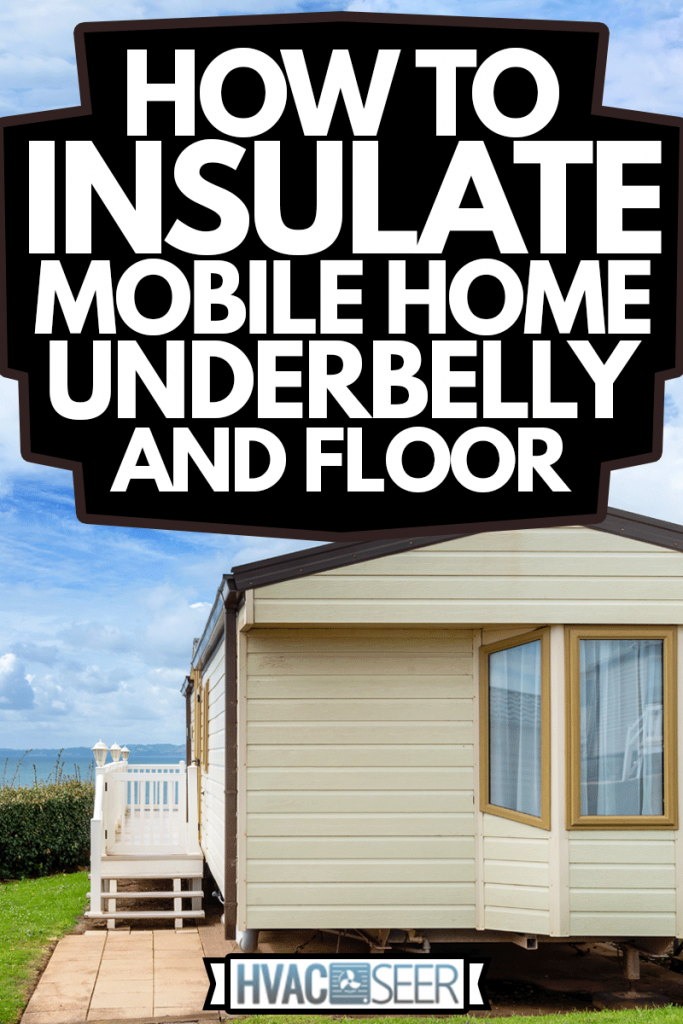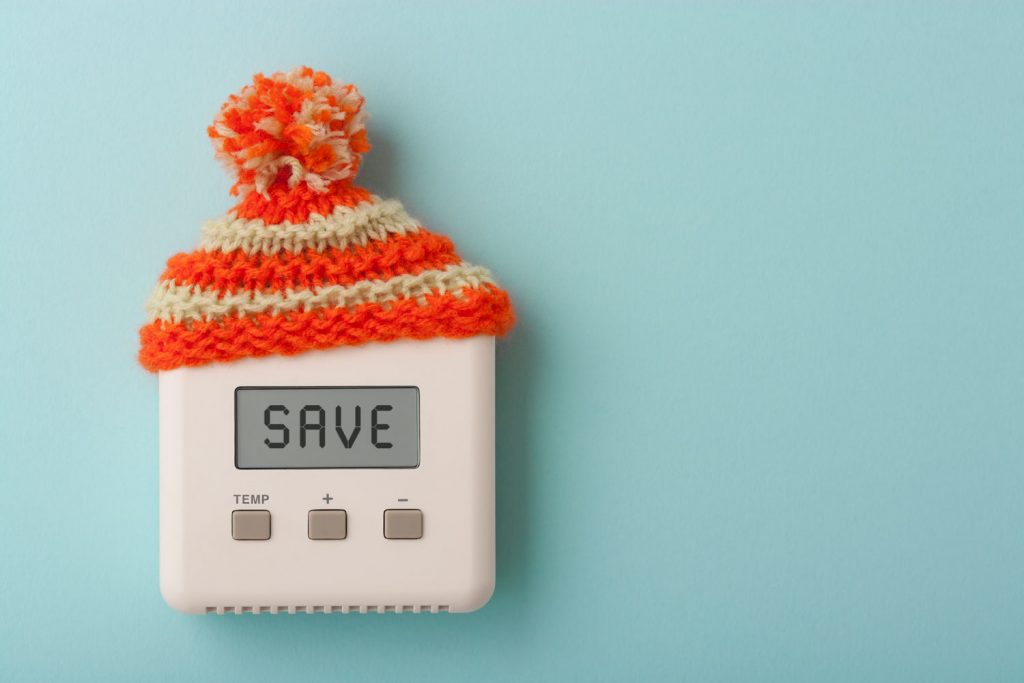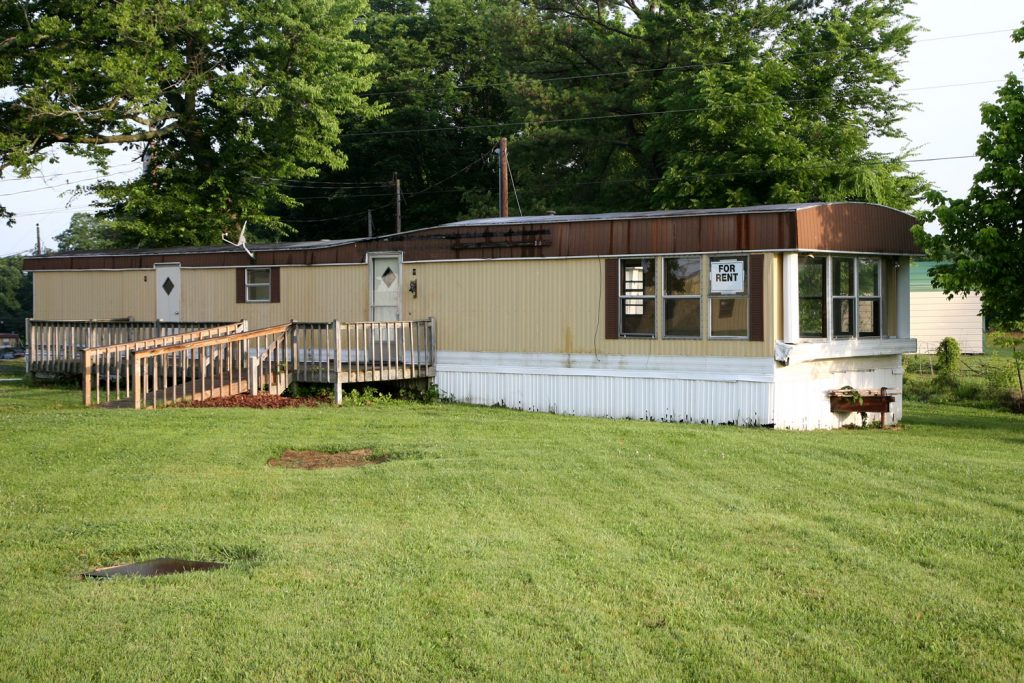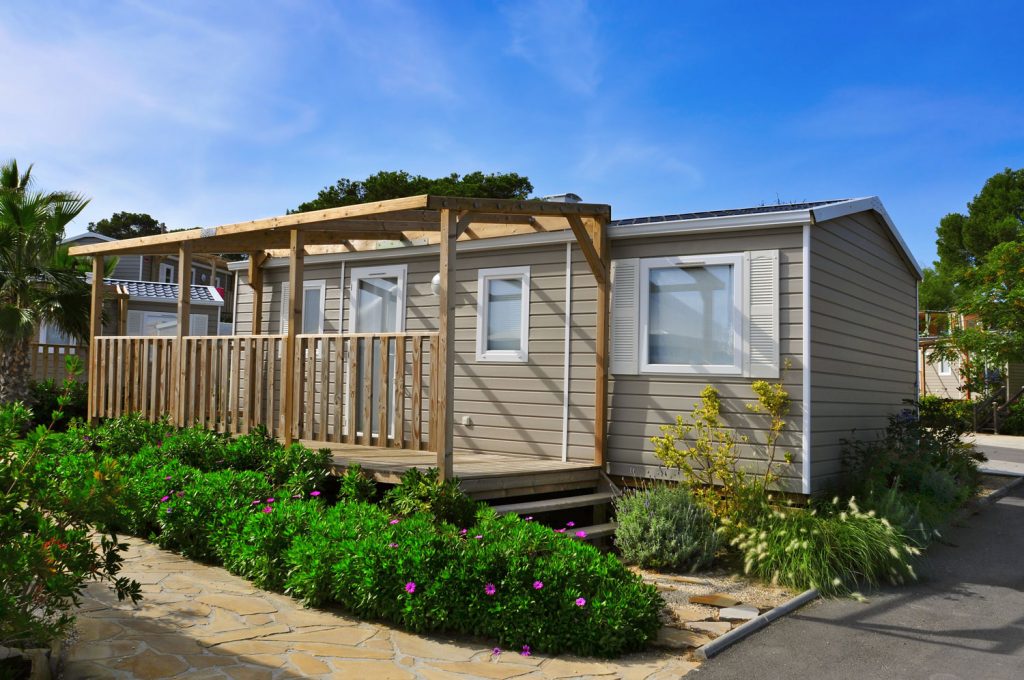Usually, mobile home floors and underbellies are poorly insulated. Knowing this, you wonder how to insulate a mobile home underbelly and floor, including the skirting. Well, in this post, we combine industry professional knowledge and up-to-date research to answer your question thoroughly.
To insulate a mobile home underbelly/floor, blow loose-fill fiberglass insulation into the belly cavity. Insulate mobile home skirting with closed-cell foam board. To blow a mobile home's belly with insulation, follow these general steps:
- Gain Access and Remove Debris
- Patch Plumbing Leaks
- Repair Holes in Belly
- Gather Insulation and Insulation Blower
- Blow Belly Full
- Insulate Water Pipes
Keep reading the rest of this post for detailed directions on how to insulate a mobile home underbelly and mobile home skirting. To begin, we consider which type of insulation you should install. To conclude, we answer a few related questions.

How To Insulate Below a Mobile Home
According to the Department of Energy, a home's temperature and pressure boundaries should be aligned for the most effective insulation. The pressure boundary underneath mobile homes is the floor sheeting and flooring assembly.

Therefore, if you were to insulate your mobile home skirting, the crawlspace would be a large pocket of unconditioned air between your warm home and that insulation. This would mean the skirting insulation would be resisting temperature movement between a chilly crawl and an even colder exterior.
Instead, insulate your mobile home's belly or underfloor. This way, the insulating is resisting the movement of temperature between the conditioned inside of your home and the cold unconditioned crawlspace.
To learn more about energy saving in a mobile home, read this HVAC Seer article, "What's The Best Furnace For A Mobile Home?"
How To Insulate A Mobile Home Belly/Underfloor
In most cases, mobile homes have a material that is covering the floor assembly known as the belly. This heavy cloth-like sheet protects the existing insulation, most of the plumbing, and ductwork. It can be a thicker board or very thin, similar to a tarp.

However, there is usually between 4-inches and 8-inches of space between the belly's existing insulation and the actual floor of your home. Therefore, it is possible to fill the space with blown-in insulation to achieve a much better-insulated flooring assembly.
If your mobile home has no belly, you should instead use spray foam or fiberglass batts to insulate. As this is a rare case, we only provide details on insulating a mobile home with a belly.
1. Gain Access and Remove Debris
The first step to insulating under a mobile home is to gain access to the entire crawl space. Often, this might involve removing sections of skirting. Other times, you will want to remove any trash or debris that makes working in the space difficult.
2. Patch Plumbing Leaks
After your first tour of the mobile home crawl, it is not uncommon to find leaks in your plumbing. Any wet spots on the belly or flooring assembly are sure signs that you have a plumbing leak. Before proceeding, make sure these leaks are totally fixed.
3. Repair Holes in Belly
Another issue you may notice in your first crawl space exploration is holes in the belly material. These occur from leaks, pests, and age. Gaps in the belly range from very small to several hundred square feet large.
Click here for mobile home belly repair material from Amazon.
No matter the size, you want to repair all holes in the belly before insulating. First, remove all downed insulation and cut away the ragged edges of the broken belly. Then, cut the belly repair material to overlap the hole edges. For large holes, you may need to use several pieces of repair material.
Click here for D-ring staples from Amazon.
For the most solid connection, use a combination of staples and repair tape to connect the patch to the existing belly. Use specialized D-ring staples fired from a squeeze trigger staple gun. Generally, fire one staple at least every 6-inches.
Click here for flex-mend tape from Amazon.
Once stapled, use mastic or flex-mend tape in addition on all edges. The goal is to create a patch that will hold the significant pressure and weight of the blown-in fiberglass insulation. For very small holes, the flex-mend tape alone may be sufficient.
4. Gather Insulation and Insulation Blower
Importantly, you now want to buy the insulation and rent or acquire the insulation blower. Because of the need for the blower, it is common to hire a professional insulating company to perform the entire belly blow.
Usually, these blowers can be rented from equipment rental shops or retail locations that sell the loose-fill insulation.
First, measure the distance between your belly and your flooring for the loose-fill insulation. Then, multiply this number by the square footage of your crawl to get the needed cubic feet of loose-fill insulation.
It is wise to overbuy insulation bags because the belly will sag. This increases the total cubic feet. Further, if you have too many bags, you can always return the unopened ones for a full refund.
What kind of insulation do you use on a mobile home floor?
It is most common to use loose-fill fiberglass insulation for mobile homes. The logic stems from the fact that mobile home underbellies are relatively fragile, and the plumbing is prone to leaking.
While slightly more costly than cellulose, fiberglass retains some insulative properties when wet. Cellulose is worse than no insulation once it contacts significant moisture.
5. Blow Belly Full
Now that the belly is fully closed, it is time to cut very specific holes. Cut an X that is only large enough to allow you to fit the hose that connects to the insulation blower.
Click here for a utility knife from Amazon.
It is easiest to cut these holes in the middle of the floor joist bays and push the hose as far in as possible. Then, follow the directions on the insulation blower blow insulation into the belly. Slowly pull the hose out as you fill the available space.
As you do this work, you will get a sense of how far you can fill the belly from one hole. The belly will feel taut to the touch and should be difficult to compress by hand when you have inserted enough insulation.

Depending on the space available, the directions of the floor joists, the existence of ducts, and other obstructions, you will have to cut more or fewer holes into the belly. Remember, it is always better to make too many access holes and insulate well than to cut too few and insulate poorly.
For the easiest repair process, repair your holes as soon as you are done blowing in that location. Make these repairs using the directions in the above subsection 3.
6. Insulate Water Pipes
Depending on the space available in your belly, you have now added between R-12 and R-30 in insulation. While this will cut down on your heating bills, it also stops heat from leaking into your crawl space.
Previously, that leaked heat would help keep any uninsulated water pipes from freezing. However, now your new insulation could lead to expensive frozen pipes. To avoid this, insulate all exposed pipes.
You can do this by wrapping fiberglass batts or using any preformed pipe insulation. Read this excellent HVACseer post, "What Is The Best Insulation For Pipes?"
How to Insulate Mobile Home Skirting
As promised, we will also cover how to insulate mobile home skirting. When less effective than floor or belly insulation, skirting insulation will help reduce your utility bills and will help pipes from freezing. In very cold climates, you may choose to insulate the skirting and the floor.
Click here for foam board from Amazon.
Use a closed-cell foam board that you will attach to the inside of your skirting. Cut the board to fit around any obstructions so that you get continuous coverage from the mobile's belly and the dirt ground.
Click here for silicone caulk from Amazon.
You can screw the foam board in place or attach it to the skirting with silicone caulk. For the best results, use more silicone caulk to fill gaps between foam board pieces and where the board meets framing or other support structures.
What is a belly wrap for a mobile home?
As mentioned above, belly wrap is the material that protects your floor assembly and insulation from the crawl space. Usually, this is a fiberboard, fiberglass board, heavy cloth, tap paper, or woven polyethylene.
Without this belly wrap, also known simply as the belly or belly board, your underfloor insulation would be less effective, and pests would have easy access to your ductwork and plumbing.
How much does it cost to insulate the bottom of a mobile home?

Insulating the bottom of a mobile home costs between $2,000 and $8,000 depending on whether you hire a professional company, the total cubic feet, and how much belly repair you have to perform.
For very effective budgeters, you may be able to come under this price depending on the cost of fiberglass. Expect to pay at the high end of this range, or even more, if you hire a professional company to do the blowing for you.
How can I make my mobile home floor warm?
The best way to keep your mobile floor warm is to insulate. Then, the flooring will get warm from the interior heating and will not lose its heat so quickly. To do this, follow the directions in this post.
In Closing

This post covers how to insulate a mobile home belly/underfloor and how to insulate mobile home skirting. These instructions are step-by-step and will help you do this project yourself. Good luck!






